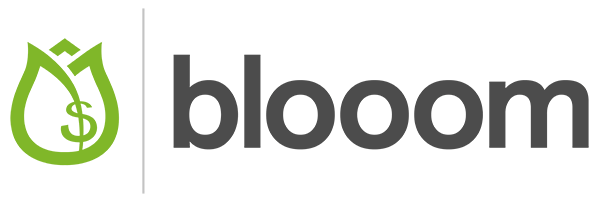
Saving for retirement can be a confusing experience whether you’re just getting started in your early twenties or you’re on the verge of retiring within the next decade. There are so many different options to choose from – not all of which may be available to you, depending on what your employer offers – and choosing the best plan possible is critically important for securing your long-term financial sustainability.
If you’ve encountered 403b retirement plans and/or 457b retirement plans as potential retirement planning options, then which one would be the ideal fit for your situation?
403b vs 457b
Before we take a deep dive into the pros and cons of each type of retirement savings account, let’s start with the basics: what exactly is a 403b retirement plan and 457b retirement plan? The IRS describes the 403b plan as a tax-sheltered annuity retirement plan available to most employees of public education systems and some 501(c)(3) tax-exempt organizations. Meanwhile, the 457b plan is a deferred compensation plan available to employees of local/state governments and some nonprofit organizations.
If you work for a government department, public school (K-12 and higher education alike), or tax-exempt, nonprofit organization, then you may have access to one or both of these options to support your retirement savings goals. To determine which plan is the better option for you, let’s explore some of the upsides and downsides of both the 403b and 457b plans.
Pros and Cons of 403(b) Retirement Plans
403b plans operate similarly to 401ks in that they’re a type of defined-contribution plan that enables employees to accumulate their retirement savings on a tax-deferred basis. Public educational institutions are the most common employers that offer 403b plans, though other, non-education organizations may also offer it if registered as 501(c)(3) organizations under the IRS.
A major advantage of 403b plans is that you may contribute as much of your salary to the plan as employees with 401k plans do. As of 2021, the maximum contribution amount for 403b and 401k plans is $19,500 (plus a maximum “catch-up” contribution of $6,500 allowed for workers aged 50 and older). Contributions to 403b plans are made on a pre-tax basis. Notably, the 403b plan has a unique catch-up provision. Employees who have been with their company for 15+ years can contribute up to $15,000 more if they meet certain other criteria for elective deferrals.
Another benefit of the 403b retirement plan is that employers can offer matching contributions on their employees’ retirement savings investments. However, it must be noted that the IRS imposes a maximum of $58,000 in total contributions from both the employer and employee (as of 2021). If you were to leave your current employer for a new workplace, rest assured your 403b retirement plan is safe because you can take your plan to the new employer and/or roll your plan over into another qualified retirement plan.
403b plan distributions function similarly to 401k retirement plans. The earliest you may take out distributions without incurring the 10% early withdrawal penalty is age 59 ½ (the latest you can start is age 72), these distributions are taxed as regular income, and if you need to take out a loan from your 403b plan at some point, you may have that option available to you (with certain restrictions).
One major downside to 403b plans is that you can only invest your retirement savings in annuity contracts or mutual funds. Given that annuities may lock you into contracts lasting 5-10+ years, this can seriously limit the diversity of your retirement portfolio if you don’t contribute to other plans as well (e.g., Roth IRA). 403b plans also tend to come with higher fees, which can eat into your returns on investment over time.
One great resource to manage your 403b retirement plan is blooom. Let the experts at bloom take a free peek at your 401k. Get real advice on how it’s doing and how it could be performing better.
When you become a member, blooom then makes trades to optimize your account based on your goals. Blooom can manage your 401k, 401a, 403b, 457, or Thrift Savings Plan (TSP). Be sure to read my review of blooom.
Pros and Cons of 457(b) Retirement Plans
457b retirement plans have some similarities with 403b retirement plans. The maximum annual contribution to these plans (as of 2021) is $19,500, plus an additional $6,500 for workers aged 50 and older. However, one benefit to 457b plans over 403b plans is the option for workers within three years of the normal retirement age to contribute up to $39,000 annually to their 457b plan.
Another major advantage of 457b plans over 403b plans is that you can withdraw funds from the plan once you’re no longer with that employer. Whereas the 403b plan may incur 10% early withdrawal penalties for taking money out before age 59 ½, 457b plans are among the most flexible retirement plans out there because you won’t be subject to withdrawal penalties so long as you’ve left the employer that provided the 457b plan.
The primary downside to 457b retirement plans compared to 403b plans is that employer contributions count towards your annual maximum contribution limit of $19,500. This means that if you personally contribute $12,000 to your 457b plan, your employer may only contribute up to $7,500 more in a given year (whereas 403b plans may receive a maximum of $58,000 in annual contributions between the employee and employer).
Your company may choose whether you have a 403(b) or a 457(b) plan. If you work for the government, you’ll be given a 457(b). You will almost certainly get a 403(b) if you work for a public school or church. Some nonprofit workers may have to pick between the two.
How can you tell which kind of plan is right for you? 457(b) plans usually offer more benefits, but 403(b) plans are easier to control. If your company offers both a 457(b) and a 403(b), make sure to find out the differences between them before making any decision.
Both 403b and 457b plans have great retirement savings options for public school, government, and nonprofit organizations’ employees. It ultimately comes down to how old you currently are, your long-term retirement goals, what income tax bracket you’re in, how much you currently have saved for retirement, and whether your employer offers matching contributions.
Like anything related to investing, it’s generally best to diversify your future income streams as much as possible to hedge against risks, so weigh your options carefully and talk to a financial professional to confirm you’re prioritizing a retirement plan aligned with your goals.
Disclaimer – This blog post does not constitute professional financial advice. You should seek out the advice of a financial professional before making any retirement decisions to discuss your specific financial needs and goals.


